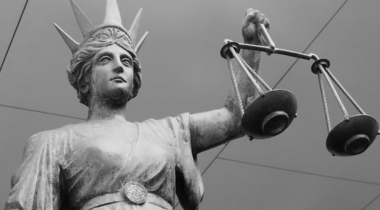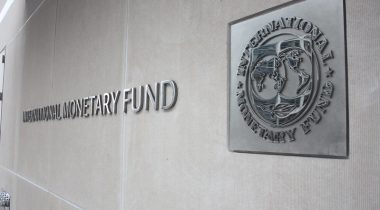
Tax Justice Network ■ How Denmark is verifying beneficial ownership information

Guest blog by Jesper Bertelsen, Danish Business Authority
The concept of a well-functioning beneficial owner register sounds achievable and easy, at a first glance. Simply put, legal entities check who their beneficial owners are, and enter this information into a system, in turn making it publicly available (at least for countries with public registers).
For the vast majority of legal entities in Denmark, and indeed the world, that task is straightforward. Law abiding legal entities simply register their beneficial owners because they are not interested in concealing their ownership. And, albeit with some formal errors and misinterpretations of the rules, this approach is well-functioning, and the published data about beneficial owners is mostly correct.
However, the purpose of a beneficial owner register is not fulfilled if it only caters to those entities that have the intention to play by the rules. Entities attempting to conceal their beneficial ownership, are indeed the most relevant entities to the governing authorities and financial intelligence units. The challenge for financial intelligence units and beneficial owner registers worldwide is to determine which entities are registering false information about their beneficial owners in order to conceal their ownership.
Therefore, the information that is entered into any beneficial owner register must be verified in order to ensure that the reported information is correct. To that extent, there are limitations on how far and in what quantities beneficial owner information can be verified, at least automatically.
How the Danish register verifies beneficial owner information
The Danish beneficial owner register is operated by the Danish Business Authority, which also operates the Central Corporate Registry. The Danish beneficial owner register is integrated into the Central Corporate Registry, meaning that all corporate information is available on the same webpage.
When a Danish person, registered with a Danish social security number (CPR-number), is registered as a director, board member, beneficial owner, legal owner or founder, the system automatically runs a series of checks. The system automatically retrieves the person’s address from the National Register. The system can also detect if the person is deceased or if the person has not registered an address, if the person is missing, and if the person is under the age of 18. All these parameters can be altered, so the effect of a person matching with one of these criteria can be altered.
For example, if a person is under the age of 18, this person cannot be registered as a part of an entity’s management. So, when a person tries to enter into the system that a minor is the director of a company, the system rejects the entry and the entry cannot even be reported. But, if a minor is registered as a beneficial owner, these system permits this to be submitted. But once the case is submitted, it can be decided whether these cases can be registered immediately or ifa manual review is needed first. These rules can be altered, or more rules can be added, if needed.
Foreign beneficial owners
When a beneficial owner is not a national, several issues arrise. First, the bulk of structured data that is present for Danish citizens disappears. We can no longer automatically verify if the beneficial owner is deceased or resides at the registered address.
The following information has to be submitted, when a foreign beneficial owner is registered:
- Full name
- Address
- Citizenship
- Passport number or identity card number
- Picture of a valid passport or identity card
- Details about the Beneficial Ownership
The validity of the submitted information depends (more than for Danish nationals) on the advisers and service providers who provide the information. It should be noted that in any case providing false information to the register is a criminal offence, which entails that the persons submitting the information can be held liable for supplying false beneficial owner information.
In order to verify the identity of foreign beneficial owners, the Danish Business Authority has introduced a series of checks that apply to foreign beneficial owners. First of all, the address is verified, by an international database, to ensure that the address exists. This does not ensure that the beneficial owner resides at the given address, but it does ensure that the address exist. Next, the Danish Business Authority sends the beneficial owner a letter to inform the person of their registration. If this letter is sent back to the Danish Business Authority, because the beneficial owner does not reside at the address or if the address turns out to be incorrect, the Danish Business Authority contacts the person that registered the beneficial owner and asks for a correct address and supporting documentation. Thus ensuring that the address is correct.
Next, the beneficial owner has to submit a picture of their passport or European identity card. The Danish Business Authority has developed a system that resembles those used in airports to scan the passport or identity card in order to ensure that the correct information is entered into the system. It also ensures, in some areas, that the passport has not been falsified.
Automatically verifying beneficial owner data is just the first stage in ensuring that the register displays the correct beneficial owners.It is well known that entities that have the goal of concealing their beneficial ownership often register an incorrect person as the beneficial owner. If the entity can provide a valid passport and all the necessary details about the individual, even the best verification system cannot detect whether this person is indeed the entity’s beneficial owner or a decoy.
Therefore, the Danish Business Authority also conducts manual checks to verify the information, and the Danish Business Authority can dissolve companies and entities that cannot properly provide the necessary documentation. This effort is well underway, and 17 entities have already been dissolved using this approach.
It is important to note that in order to make these cross-checks work in practice, a number of boxes must be checked. First of all, the Corporate Registry has to be fully digital, as well as the system used to file information with the Registry. Second, the other authorities that provide the data needed must also be digitalized, and have structured data as well, in order to make these checks work in real life. The Danish Business Authority has invested in a very modern IT-infrastructure that makes it possible for the beneficial owner register to conduct these checks.
The possibilities for cross-checking and verifying beneficial owner information are immense and can always be improved. The Danish Business Authority aspires to be in the forefront of the development of beneficial owner registers and look to other registers around the world to seek inspiration. We are closely monitoring the research and the increasing development in the sector.
Related articles

🔴Live: UN tax negotiations – First Session

What to know and expect ahead of this week’s UN tax negotiations

The secrecy enablers strike back: weaponising privacy against transparency
Privacy-Washing & Beneficial Ownership Transparency
26 March 2024

Ireland (again) in crosshairs of UN rights body

Tax policy and gender disparity: A call to action on International Women’s Day 2024

Policy research conference: How a UN Tax Convention can address inequality in Europe and beyond

The IMF’s anti-money laundering strategy review is promising, but it all comes down to implementation

Inequality Inc.: How the war on tax fuels inequality and what we can do about it
Proposal for ‘Business in Europe: Framework for Income Taxation’ (BEFIT): A wrong turn in the right direction
2 February 2024

